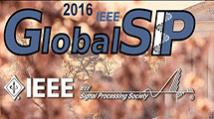
A flagship conference of the IEEE Signal Processing Society, GlobalSIP is structured around coherent symposia that explore new and emerging developments in the field, while maintaining a format that encourages accessibility to interested researchers and fosters interaction and cross-pollination of ideas.

- Read more about SAMPLING AND DISTORTION TRADEOFFS FOR INDIRECT SOURCE RETRIEVAL
- Log in to post comments
We study the problem of remote reconstruction of a continuous signal from its multiple corrupted versions. We are interested in the optimal number of samples and their locations for each corrupted signal to minimize the total reconstruction distortion of the remote signal. The correlation among the corrupted signals can be utilized to reduce the sampling rate.
Poster3.pdf
- Categories:
 7 Views
7 Views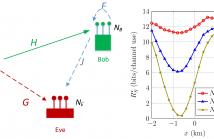
- Read more about A MINORIZATION-MAXIMIZATION (MM) ALGORITHM FOR ARTIFICIAL NOISE (AN)-BASED MIMOME SECRECY RATE MAXIMIZATION
- Log in to post comments
We consider the problem of secrecy rate maximization in a multi-input multi-output multi-eavesdropper (MIMOME) wiretap channel and present an exact solution. A general system model with a multi-antenna eavesdropper and a multi-antenna full-duplex receiver is considered. In particular, we perform joint beamforming and artificial noise optimization in an effort to maximize the achievable secrecy rate. The optimization is performed in the presence of artificial noise generated by both transmitter and legitimate receiver. The resulting optimization problem is non-convex and difficult to solve.
- Categories:
 45 Views
45 Views
- Read more about On the Sum of Gamma-Gamma Variates with Application to the Fast Outage Probability Evaluation Over Fading Channels
- Log in to post comments
The Gamma-Gamma distribution has recently emerged in a number of applications ranging from modeling scattering and reverberation in sonar and radar systems to modeling atmospheric turbulence in wireless optical channels. In this respect, assessing the outage probability achieved by some diversity techniques over this kind of channels is of major practical importance. In many circumstances, this is intimately related to the difficult question of analyzing the statistics of a sum of Gamma-Gamma random variables. Answering this question is not a simple matter.
- Categories:
 9 Views
9 Views
- Read more about Blind channel gain cartography
- Log in to post comments
Channel gain cartography relies on sensor measurements to construct maps providing the attenuation between arbitrary transmitter-receiver locations. A number of applications involving interference control, such as wireless network planning or cognitive radio, can benet from channel gain maps. Existing approaches capitalize on tomographic models, where shadowing is the weighted integral of a spatial loss eld (SLF) that depends on the propagation environment.
- Categories:
 18 Views
18 Views
- Read more about Decentralized Sparsity Pattern Recovery using 1-bit Compressed Sensing
- Log in to post comments
We address the problem of decentralized joint sparsity pattern recovery based on 1-bit compressive measurements in a distributed network. We assume that the distributed nodes observe sparse signals which share the same but unknown sparsity pattern. Each node obtains measurements via random projections and further quantizes
- Categories:
 23 Views
23 Views
In this paper, we mine the US congress voting records to extract the latent information about the trust among congress members. In particular, we model the Senate as a social network and the voting process as a set of outcomes of the underlying opinion dynamics which we assume follow a corrupted DeGroot model. The transition matrix in the opinion dynamics model is the trust matrix among Senators that we estimate.
- Categories:
 9 Views
9 Views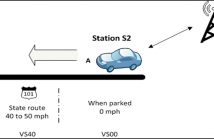
- Read more about A QUANTITATIVE ANALYSIS OF HANDS-FREE SPEECH ENHANCEMENT USING REAL AUTOMOBILE DATA
- Log in to post comments
This paper provides a detailed comparison study between three different vehicles’ Bluetooth built-in noise cancellation filter with two widely used techniques in speech enhancement, Spectral Subtraction (SS) and Wiener filtering (WF). The main purpose is to determine if any of these two filters provide superior audio quality over the built-in filter.
- Categories:
 5 Views
5 Views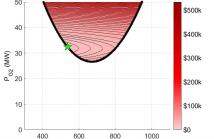
- Read more about Moment Relaxations of Optimal Power Flow Problems: Beyond the Convex Hull
- Log in to post comments
Optimal power flow (OPF) is one of the key electric power system optimization problems. "Moment" relaxations from the Lasserre hierarchy for polynomial optimization globally solve many OPF problems. Previous work illustrates the ability of higher-order moment relaxations to approach the convex hulls of OPF problems' non-convex feasible spaces.
- Categories:
 5 Views
5 Views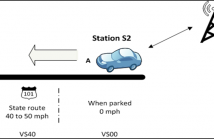
- Read more about A QUANTITATIVE ANALYSIS OF HANDS-FREE SPEECH ENHANCEMENT USING REAL AUTOMOBILE DATA
- Log in to post comments
This paper provides a detailed comparison study between three different vehicles’ Bluetooth built-in noise cancellation filter with two widely used techniques in speech enhancement, Spectral Subtraction (SS) and Wiener filtering (WF). The main purpose is to determine if any of these two filters provide superior audio quality over the built-in filter.
- Categories:
 13 Views
13 Views